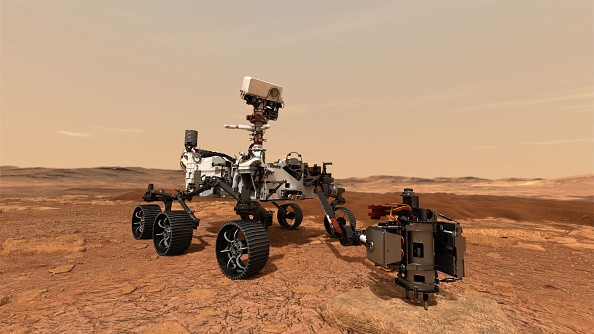NASA's Mars Perseverance Rover has successfully collected its first-ever dirt sample from the rocky surface of the Red Planet.
The Martian dirt sample includes broken rocks and dust, which could aid the first visit of humans to Mars.

NASA Mars Perseverance Rover Snags First-Ever Dirt Sample
As per the NASA Science Mars Exploration Program, the Perseverance Rover booked another milestone.
The National Aeronautics and Space Administration (NASA) has retrieved two new dirt samples thanks to its Perseverance rover.
It is worth noting that it is not the first time that the rover snagged samples from the rocky surface of the Red Planet. In fact, it has already collected 15 rock samples since it started its mission on Mars.
This time, the rover collected two samples that contained dust and broken rocks. The space agency explains that this new collection "came from a pile of wind-blown sand and dust."
Essentially, these are pretty much similar to a dune, but the samples are quite smaller.
According to a recent report by Space.com, the latest collections are called regolith samples. The Perseverance Rover snagged the first one last December 2.
And a few days after that, it collected the second sample. Space.com notes that on Tuesday, December 6, the rover bottled up a new Martian dirt sample.
Read Also : Scientists Find Compelling Evidence of Life on Mars in Jezero Crater's Trove of Organic Materials
What Sets the New Martian Samples From Previous Ones?
First off, the two new samples that Perseverance collected were from wind-blown sand and dust.
On the other hand, the previous rock collections of the Mars rover were manually drilled from the rocky surface of the Red Planet.

Space.com highlights in its report that the regolith sample could potentially help in the first visit of humans to the mysterious neighboring planet of Earth. So this new collection is a huge milestone.
Scientists say that samples like the latest collection of the Mars rover could essentially help further understand how Mars came about. It could give them a better glimpse of the geological history of the mysterious planet.
The Perseverance Mission Lead at the Jet Propulsion Laboratory of NASA, Iona Tirona, says that all these collections aid future Mars missions.
Tirona says that "everything we learn about the size, shape, and chemistry of regolith grains helps us design and test better tools for future missions." She states that "the more data we have, the more realistic our simulants can be."
Related Article : Skypersonic Delivers Drones, Rover, and Piloting Platform to NASA's Simulated Mars Missions

ⓒ 2025 TECHTIMES.com All rights reserved. Do not reproduce without permission.




